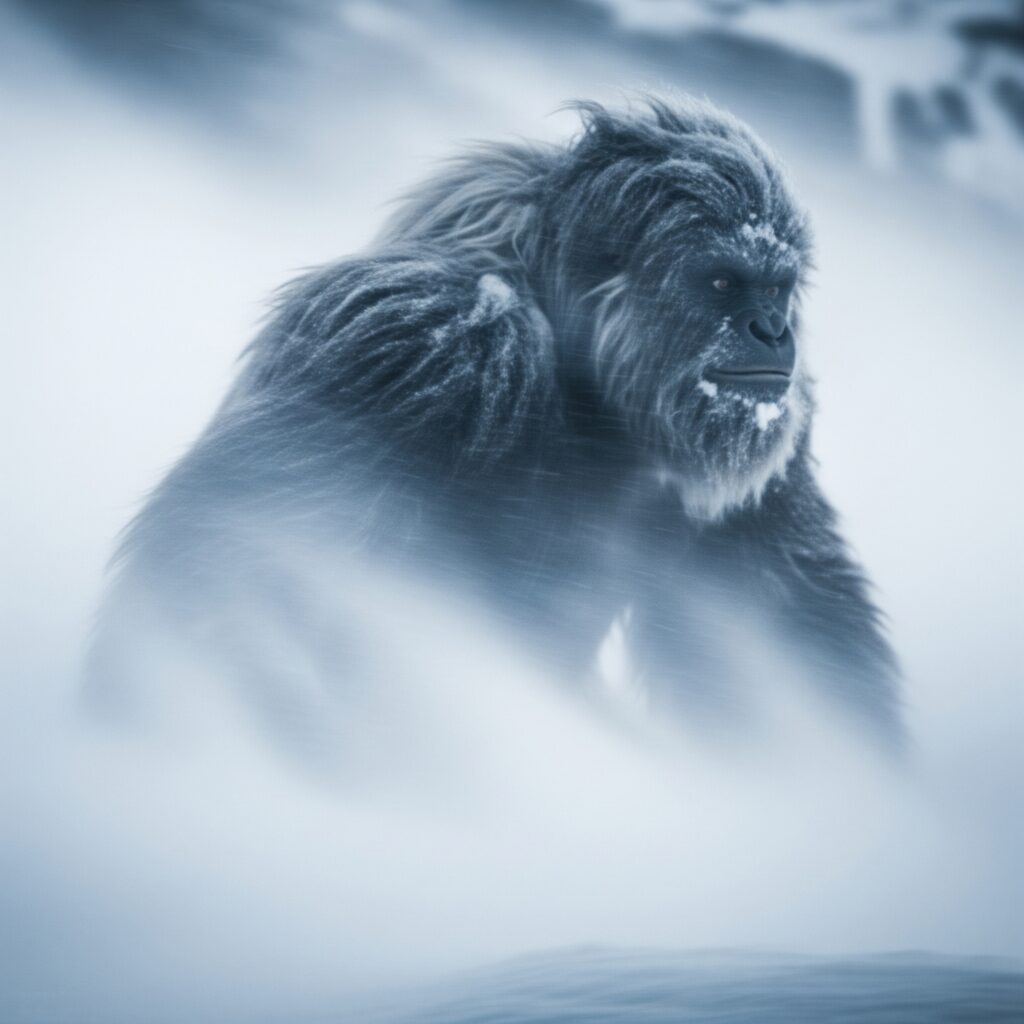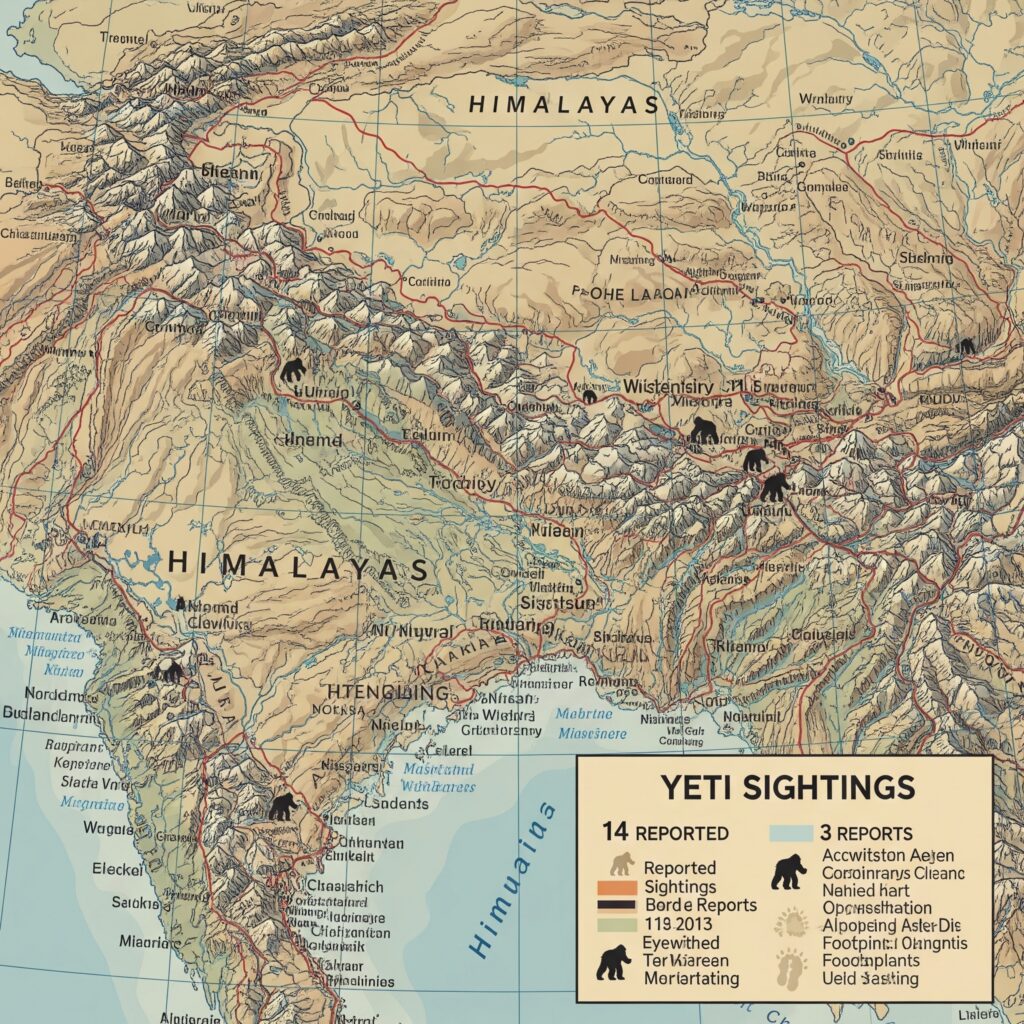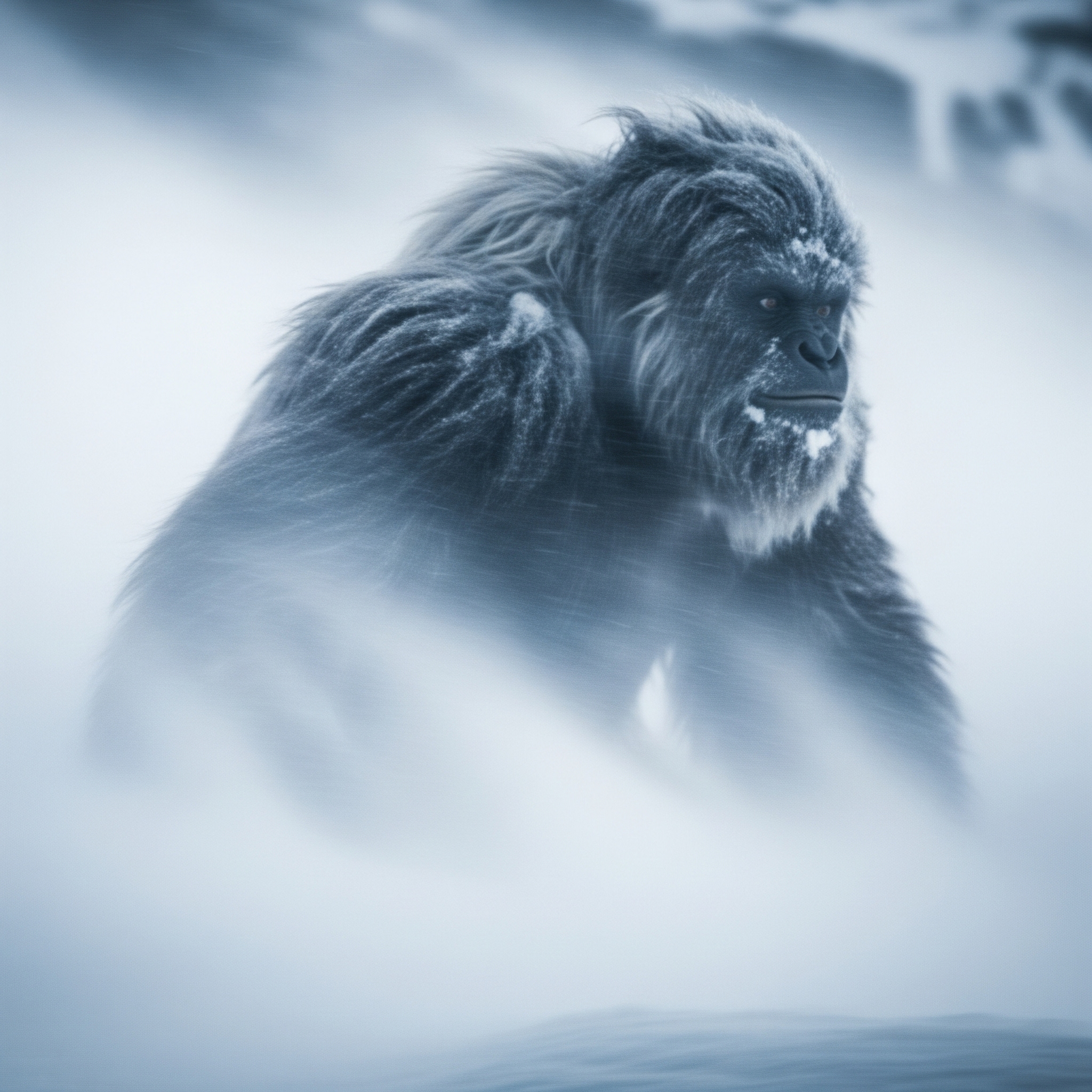This website is in the works! Things will get fixed with time.
High in the remote, snow-covered peaks of the Himalayas, a legend persists, a whisper in the wind that chills the very soul: the Yeti, also known as the Abominable Snowman. This elusive creature, said to be a large, bipedal ape-like being, has captured the imagination of explorers, scientists, and locals for centuries. While mainstream science remains skeptical, a growing body of anecdotal evidence, blurry photographic “proof,” and intriguing footprint analyses keeps the mystery alive, a flickering flame in the face of doubt.
The Yeti, or Dinandropithecus nivalis as some fringe researchers have daringly proposed, is typically described as a large, hairy hominid, standing between 6 and 10 feet tall, and weighing up to 400 lbs. Eyewitness accounts, passed down through generations like sacred texts, often describe it as having reddish-brown or black fur, a powerful, almost Neanderthal-like build, and a distinctive, musky odor that hangs in the air long after it has passed. Its most notable feature, the subject of countless debates and analyses, is its large feet, which leave behind distinctive, often enormous, tracks in the snow.
One of the most compelling, yet frustratingly ambiguous, pieces of “evidence” is a collection of blurry photographs taken over the years, often in the most challenging and unforgiving conditions. These images, while lacking the clarity that scientists demand, appear to show a large, dark figure moving through the snow, often at a considerable distance. Skeptics, with their reliance on cold, hard facts, dismiss these as misidentified animals, shadows playing tricks on the eye, or even elaborate hoaxes designed to mislead. However, proponents, driven by a thirst for the unknown, argue that the consistent descriptions across different cultures and the sheer difficulty of the terrain make misidentification highly unlikely.
Here’s a more realistic depiction of a Yeti in its natural Himalayan habitat:

Eyewitness accounts, often passed down through generations of Sherpa communities and other indigenous groups, are another crucial element of the Yeti narrative. These stories, filled with a mixture of awe and fear, describe encounters with a powerful, intelligent creature, sometimes peaceful and curious, sometimes aggressive and territorial.
One account, from a seasoned Sherpa guide named Sonam Hisha, recounts an encounter in the 1960s: “We were high on the mountain, near a glacier, where the air is thin and the silence is broken only by the wind. Suddenly, we heard a loud crashing sound, like a tree being uprooted. We looked up, our hearts pounding, and saw a large, hairy creature, walking on two legs. It was much bigger than a man, and it moved with incredible speed. We were afraid, and we ran, but the image of that creature is burned into my memory.”
Another, more recent account, details a terrifying encounter in the Ural Mountains of 2016, far from the Yeti’s traditional Himalayan home: “It was in the winter of 2016. We were hiking, far from any village, where the only sound was the crunch of our boots on the snow. We saw something moving in the distance, a tall, dark figure. It moved with incredible speed and agility, far faster than any human could. We managed to take some photos, but they are blurry, like a dream you can’t quite remember. The creature was huge, and it seemed to be watching us. We were terrified.”
These accounts, while anecdotal and open to interpretation, paint a consistent picture of a powerful, elusive creature, perfectly adapted to its harsh environment. Some even suggest the Yeti possesses supernatural abilities, capable of rendering people immobile or influencing the success of hunting trips.
Footprint analysis is another area of intense interest, a tangible clue in the Yeti mystery. Large, human-like footprints, often with a distinctive “thumb-like” indentation, have been found in the snow, seemingly too large and too distinct to be from any known animal. While some have been attributed to bears or other animals whose tracks have been distorted by melting or the shifting snow, others, with their immense size and unique characteristics, remain unexplained, a tantalizing puzzle for researchers.
Scientists who have analyzed alleged Yeti footprints have often found them to be consistent with known animals, particularly bears, whose tracks can be elongated and distorted in the snow. However, some researchers, driven by a desire to believe, continue to argue that the size and shape of certain prints defy easy explanation, suggesting a creature unlike any other.
The Yeti’s habitat is believed to be the high-altitude regions of the Himalayas, particularly in Nepal, Tibet, Bhutan, and India. These areas are characterized by extreme cold, rugged terrain, and limited human presence, providing an ideal environment for a large, elusive creature to thrive, hidden from the prying eyes of the modern world.

Reported sightings of the Yeti are concentrated in specific areas within the Himalayas, often in remote and sparsely populated regions. These locations, marked on maps with a sense of wonder and disbelief, become focal points for researchers and Yeti enthusiasts, drawn by the allure of the unknown.
Despite the lack of definitive proof that would satisfy the most rigorous scientific standards, the legend of the Yeti endures, passed down through generations, fueling the imagination and inspiring countless expeditions. Is it a real creature, a relic of a lost hominid species, a distant cousin of Neanderthals or Denisovans? Or is it simply a product of myth and misidentification, a trick of the light and the power of suggestion? The mystery remains, a testament to the enduring power of the unknown in the remote, unforgiving landscape of the Himalayas. The Yeti is more than just a creature; it’s a symbol of the wild, untamed wilderness, a reminder that there are still secrets hidden in the mountains, waiting to be discovered.







